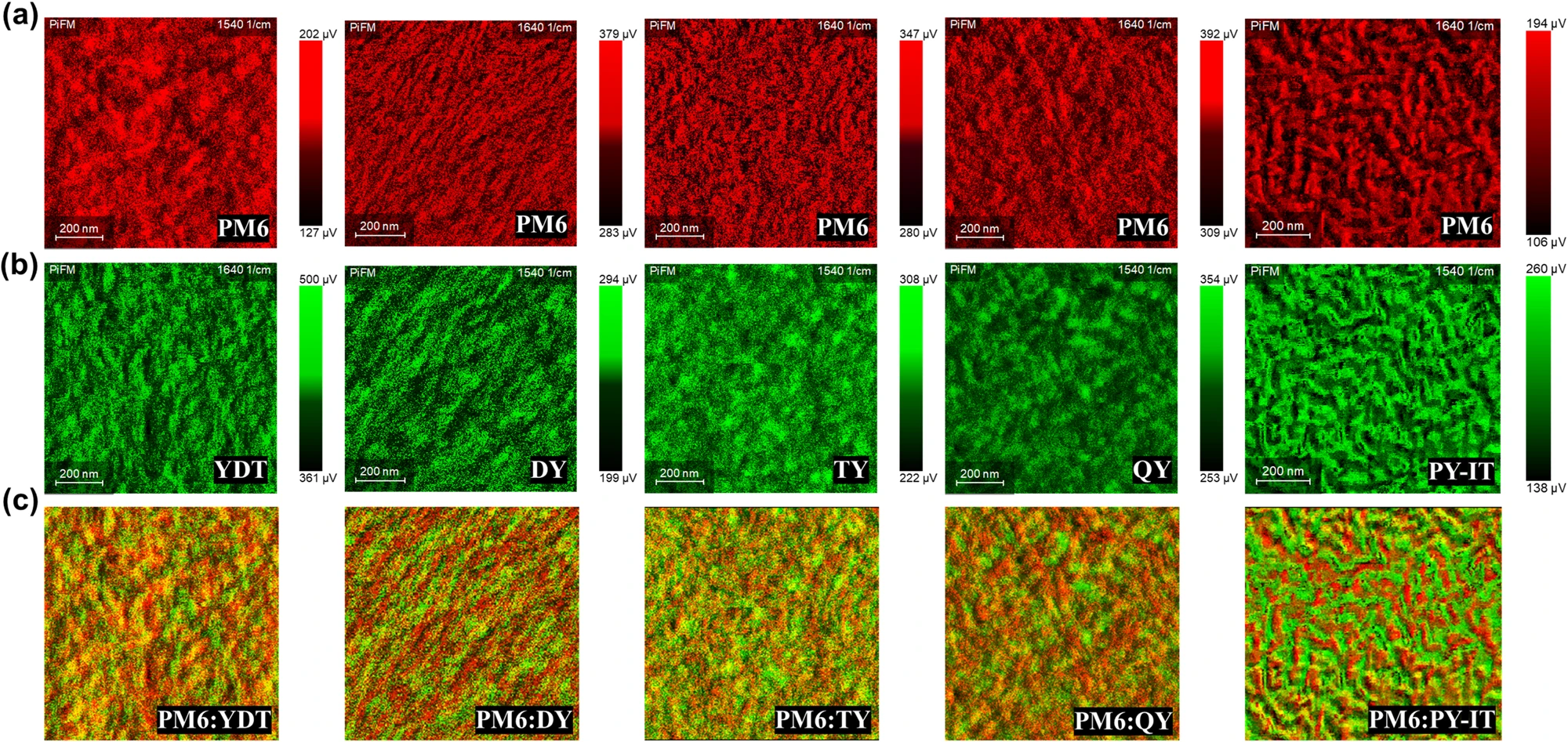In their 2023 Nature Communications article, “Precise synthesis and photovoltaic properties of giant molecule acceptors,”Hongmei Zhuo, Xiaojun Li, Jinyuan Zhang, Can Zhu, Haozhe He, Kan Ding, Jing Li, Lei Meng, Harald Ade, and Yongfang Li report a transformative advance in organic solar cell design. By precisely linking multiple small-molecule acceptors into “giant molecule acceptors” (GMAs), the researchers enhanced exciton diffusion and charge transport. Their three-unit GMA reached an impressive power conversion efficiency of 16.32%, highlighting how molecular architecture directly influences photovoltaic performance.
To unravel how these novel GMAs self-assemble, the team turned to photo-induced force microscopy (PiFM) using a VistaScope system from Molecular Vista, Inc. PiFM provides chemical contrast at the nanoscale, allowing direct visualization of donor–acceptor phase separation — a critical factor in solar cell efficiency.
At the core of these PiFM measurements were NANOSENSORS™ gold PPP-NCHAu. Specifically engineered for dynamic AFM modes, the PPP-NCHAu probes combine sharp, stable silicon tips with reflective gold coatings. This design ensures excellent signal-to-noise ratio and robust laser alignment, making them ideally suited for detecting near-field photoinduced forces. Paired with an infrared excitation source (Laser Tune IR, Block Engineering), the probes enabled domain-specific chemical mapping of the active layers.
The synergy of advanced PiFM instrumentation and the high-performance NANOSENSORS™ PPP-NCHAu cantilevers was pivotal in linking synthetic chemistry with device physics. By making nanoscale phase behavior visible, these probes helped demonstrate how precise molecular design translates into real-world solar cell performance.
This study exemplifies how precision AFM probes from NANOSENSORS™ empower researchers to reveal hidden nanoscale phenomena — accelerating innovation in materials science and organic electronics.
Fig. 6: PiFM images of the blend films.

The PiFM images of the PM6:acceptors blend films at the characteristic IR wavenumbers of 1640 cm−1 for the a donor PM6 and of 1540 cm−1 for the b acceptors YDT, DY, TY, QY and PY-IT. c the combined images of the corresponding a and b for PM6:YDT, PM6:DY, PM6:TY, PM6:QY and PM6:PY-IT blend films.
This article contains images reused from Jia et al., Nature Communications 14, 1394 (2023), licensed under CC BY 4.0.